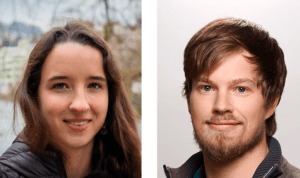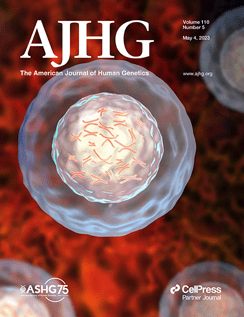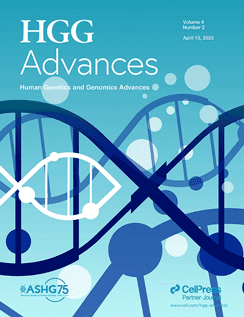
The ASHG Journal Clubs were established in the spring of 2020 to provide authors with an opportunity to present their work at a time when seminars and conferences were not taking place. Now, they are a regular feature within the ASHG Digital Programming portfolio. This month, we check in with two Journal Club presenters, Chiara Auwerx, MS, a graduate student at the University of Lausanne in Switzerland and Emil Jørsboe, PhD,, a postdoc at the University of Copenhagen in Denmark, to hear about their experiences with publishing in ASHG journals and participating in ASHG Journal Clubs. Be sure to register for the next journal club or catch up with on-demand content!
What can you tell us about your experience at AJHG?

CA: I was very pleased with the review process at AJHG. We received reviewer comments approximately one month after submitting “The individual and global impact of copy-number variants on complex human traits”. All comments were fair and globally helped improve and clarify the manuscript, which was published in April 2022, five months after the original submission. While peer-review is an important process, it should not unnecessarily delay the publication and dissemination of novel scientific findings. This is especially important for early-career scientists that often move institutions and might not be able to continue working on projects at their new position.
I also very much appreciate the effort of AJHG to promote publications after acceptance, be it through social media, newsletters, the annual ASHG meeting, or by giving the opportunity to first authors to present their recent publication at online journal clubs, thereby promoting the career of young scientists. The role of a journal is to distribute new knowledge and in today’s world it is crucial to engage on different platforms to target diverse audiences and foster discussions that might spark new ideas, insights, or collaborations.
 What can you tell us about your experience at HGG Advances?
What can you tell us about your experience at HGG Advances?
EJ: I had a really good experience with HGG Advances. HGG Advances expressed great interest in my work, and it seemed to be a good fit. Subsequently they contacted me about doing a Journal Club and a short interview about my paper. I was happy to do both, as it gave me a platform to communicate my article. So, all in all I had a good experience!
Do you have any advice/strategies for other trainees/young investigators related to presenting one’s work?
CA: The best piece of advice that I have received is not to try to impress. Because we know our project so well and are emotionally connected to it, we often tend to add details that are not crucial to the understanding of key ideas and results. These can very easily distract the audience and make them lose interest – and people really interested in the details will come forward and ask you about them. So, when I have a first draft of my presentation, I try to simplify it and make sure the transitions are smooth. I also like to use animations and graphical schemes as I find they keep the audience engaged.
My second piece of advice is simple: practice! As a non-native English speaker, practicing allows me to feel more confident and relaxed on the day of the presentation, which in turn helps me to convey my research with more enthusiasm.
EJ: I feel many presenters assume the audience is very familiar with the topic of the presentation. However, often the topic needs to be introduced before the scientific findings are presented. So, importantly, think about the audience you are targeting. Then consider how to introduce the topic– which concepts and findings you would like to present. Your presentation might seem basic to you, but seldom to the audience! Another thing that has helped me has been to rehearse the talk.
What are you most excited about that’s happening in the field of human genetics?
CA: Working on copy-number variants (CNVs), I am very happy to see that we are moving beyond single nucleotide variants and starting to study the full spectrum of human genetic variation in large population cohorts, including CNVs and more complex structural variants, short tandem repeats, but also mitochondrial variation, mosaicism, or clonal hematopoiesis. Only by studying all these variants and how they interact will we gain true understanding of how our genomes are translated into phenotypes. This work will be fundamental to explain phenomena such as incomplete penetrance and variable expressivity of diseases, blending the boundaries between rare and common diseases.
EJ: I am very excited by the fact that we now have so many results from genome-wide association studies (GWAS), that we can start translating these results into better prevention using polygenic risk scores, as well as better treatment and identification of drug targets by using casual variants. Furthermore, I am happy to see that there is a stronger focus on doing genetics in understudied populations, like for example the Greenlandic population, to which my article pertains.
